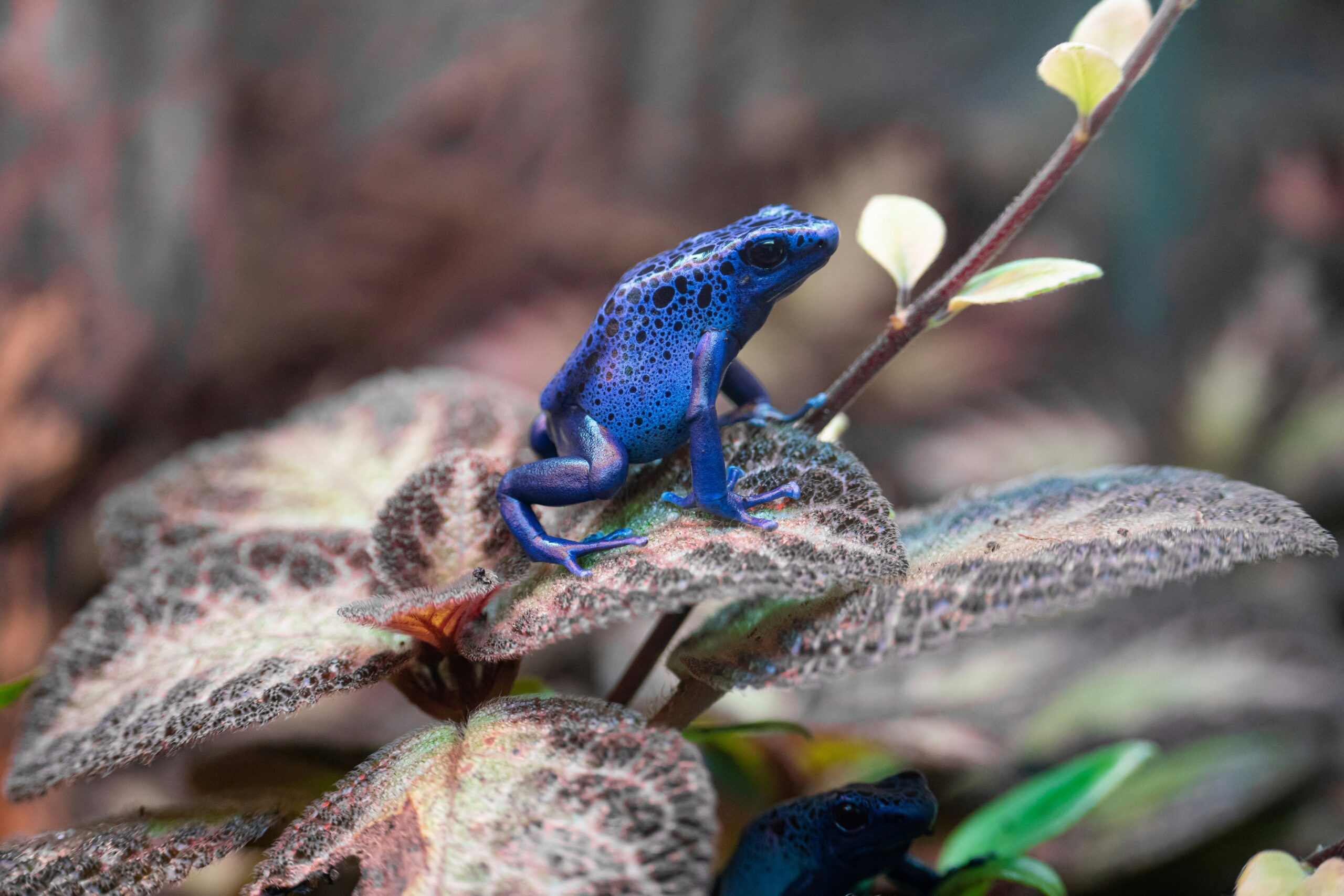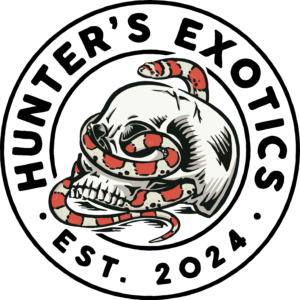Natural History
Dendrobates tinctorius ‘Azureus’ originates from the humid rainforests of Suriname. Their striking blue coloration with black spotting serves as a warning signal in the wild due to their toxic skin secretions derived from diet. Captive-bred frogs lack these toxins, making them safe to handle when proper hygiene is observed.
Enclosure & Habitat Requirements
Tank Size: Minimum 18”x18”x24” recommended for small groups.
Substrate: Use bioactive substrates like ABG mix or coconut coir with sphagnum moss to retain humidity and encourage beneficial microfauna.
Humidity: Maintain 80–100%, using automated misting or manual spraying 2–3 times daily.
Temperature: Stable 72–78°F (22–25°C), avoid exceeding 80°F.
Lighting: Low-intensity UVB (5.0 T5) with a 10–12 hour photoperiod; full-spectrum LED lighting for plants.
Decor: Include live plants (bromeliads, ferns, pothos), cork bark, and leaf litter to create natural hiding and climbing areas.
Diet & Nutrition
Feed live prey: fruit flies (Drosophila melanogaster for juveniles; D. hydei for adults) multiple times per week.
Supplement with calcium + vitamin D3 2–3 times weekly, multivitamins once weekly to prevent deficiencies.
Behavior & Temperament
Diurnal and relatively bold; often active and visible during the day.
Territorial; keep in same-species groups with adequate space.
Avoid mixing with other species to prevent stress and disease.
Common Health Issues
Metabolic Bone Disease (MBD): Prevent with supplementation and UVB lighting.
Skin infections: Maintain cleanliness and proper humidity.
Stress: Avoid sudden environmental changes and provide sufficient shelter.
Breeding Notes
Oviparous, laying eggs in moist leaf litter or bromeliads.
Males call to attract females and transport tadpoles to water sources.
Stable conditions and dedicated breeding enclosures improve success.
Hunter’s Tip
Prioritize a bioactive, heavily planted setup with automated misting to replicate the natural rainforest microhabitat, reducing daily maintenance and promoting natural behavior.
Fun Fact
The vivid blue coloration is due to microscopic skin structures that reflect light, not pigments.
Hunter’s Picks
MistKing Misting System —
Precise, programmable misting to maintain stable humidity.REPTI ZOO Budget Mister —
Cost-effective manual mister for smaller tanks.REPTI ZOO Thermometer + Hygrometer —
Accurate monitoring of temperature and humidity.ABG Bioactive Substrate Mix —
Well-draining, plant-friendly substrate that supports microfauna.Sphagnum Moss —
Helps maintain moisture and a healthy environment.Calcium with D3 Supplement —
Essential for skeletal health and disease prevention.REPTI ZOO Front-Opening Terrarium —
Spacious and convenient for maintenance and display.



